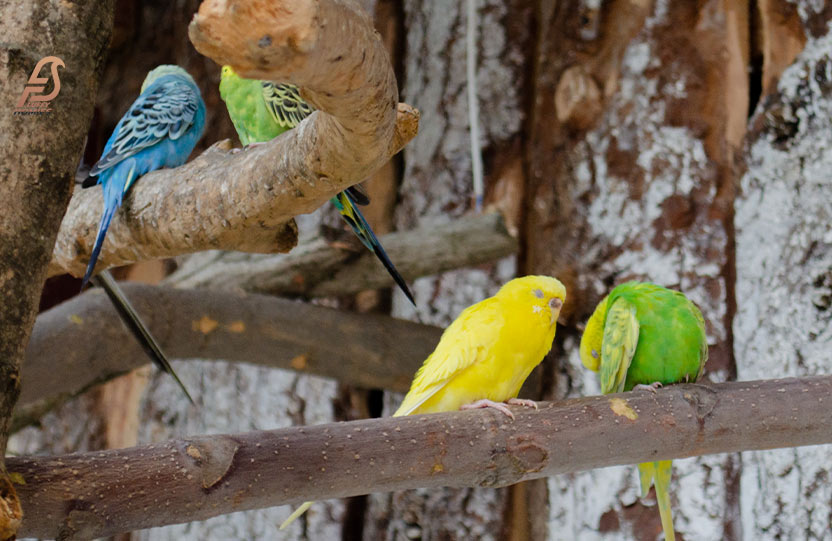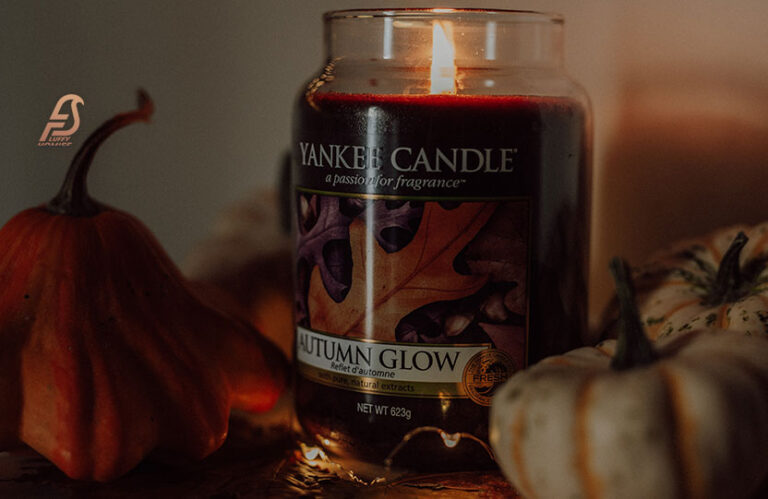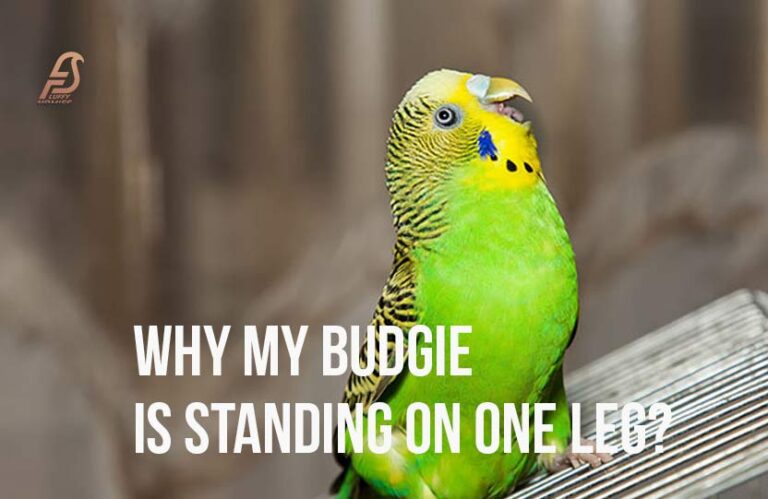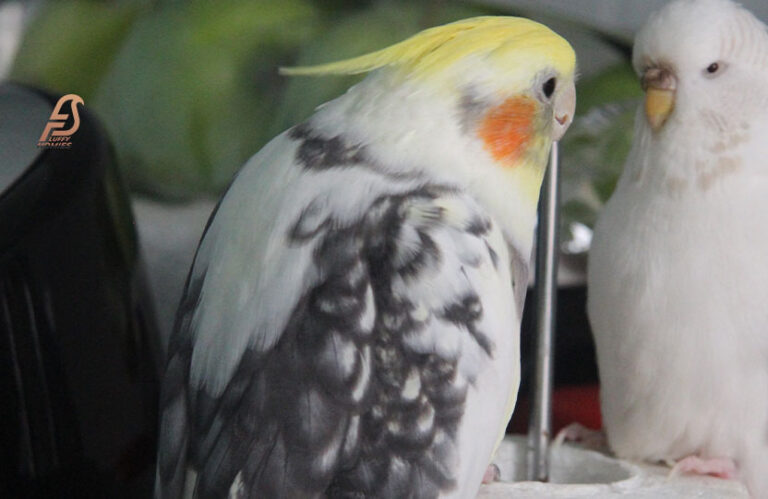What Color Should Budgie Poop Be? (Why Poop Matters 2023)
When it comes to keeping our pet budgies healthy, monitoring their poop color is an essential aspect.
Budgie poop color can provide valuable insights into their overall well-being and can indicate potential health issues.
Understanding budgie droppings is crucial because it allows you to monitor your bird’s health regularly.
By becoming familiar with the normal characteristics of budgie droppings, you can quickly identify any abnormalities and seek appropriate veterinary care when necessary.
While it may not be the most pleasant topic to discuss, paying attention to your budgie’s droppings is an essential part of responsible pet ownership.
In this article, we will explore the significance of monitoring budgie poop color, the factors affecting it, and what constitutes healthy and abnormal poop color.
We will also discuss possible causes of abnormal poop color and when it is necessary to seek veterinary assistance.
What Color Should Budgie Poop Be?
Determining the color of healthy budgie droppings can be challenging. However, experienced budgie owners who have studied feces characteristics can easily do so.
These characteristics are influenced by dietary factors, such as a variety of foods like vegetables, fruits, seeds, or pellets.
Dropping color may vary depending on the diet, but the urate and urine should maintain their appearances.
Monitor your budgie’s droppings over time and seek assistance from an avian veterinarian if there are sudden changes without dietary changes.
What Should Budgie Poop Look Like?
Budgie droppings can vary in color, consistency, and size depending on several factors. However, some general characteristics indicate healthy droppings.
Understanding what healthy bird poop should look like will help you recognize any deviations or abnormalities.
Let’s break it down into the different components of budgie droppings:
Feces
The feces in healthy budgie droppings should be dark green or brown. The shade may vary slightly based on the bird’s diet, but it should generally be consistent. The feces should be well-formed and relatively solid, resembling a small, compact shape.
Urine
Budgie urine is usually clear and not very prominent. It may appear as a white spot or area surrounding the feces. The urine is typically watery in consistency and should not make up a significant portion of the droppings.
Urates
The urates, also known as uric acid, are the white or chalky part of the droppings. They should have a pasty or creamy consistency. The urate may form a distinct separate portion from the feces and urine.
Together, the feces, urine, and urates make up the composition of budgie droppings. Healthy droppings will have a balanced combination of these components, reflecting a bird’s normal digestion and metabolic processes.

Abnormal Budgie Poop: Recognizing Potential Issues
While variations in budgie droppings can occur, certain abnormalities may indicate underlying health issues that require attention. Here are some common abnormalities to watch for:
Watery or Runny Droppings
If your budgie consistently has watery or excessively runny droppings, it may be a sign of digestive issues, bacterial or viral infections, or dietary problems.
Dehydration can also contribute to the watery consistency. Consult with a veterinarian if you observe this condition persistently.
Blood in Droppings
The presence of blood in budgie droppings is a serious concern and should be addressed immediately. It can be a sign of internal injuries, bleeding disorders, or gastrointestinal issues. Contact a veterinarian for urgent evaluation and treatment.
Straining or Difficulty Passing Droppings
If your budgie appears to be straining or experiencing difficulty while passing droppings, it may indicate a blockage or obstruction in the digestive tract. Seek veterinary assistance promptly to prevent complications.
Changes in Color or Consistency
Significant and persistent changes in color, consistency, or frequency of droppings can be indicative of health issues.
Examples include excessively dark or black droppings, excessively pale or white droppings, or droppings with mucus. These changes may suggest problems with the liver, digestive system, or other underlying conditions.
Related Articles
- Are Parakeets Destructive?
- Do Parakeets Poop Everywhere?
- Are Parakeets Good Parents?
- Why Is My Budgie Panting?
Why Is My Budgie’s Poop Different?
Budgie droppings can vary in color, consistency, and other characteristics from time to time. While certain changes may be normal and temporary, others can indicate underlying health issues.
Let’s explore some of the reasons why your budgie’s poop may appear different:
Diet
Changes in diet can result in changes in the appearance of droppings. For example, if your budgie consumes foods high in pigments, such as carrots or beetroot, it may temporarily affect the color of the droppings.
Stress or Environmental Factors
Stressful events or changes in the environment can impact your budgie’s digestion and, subsequently, their droppings.
Moving to a new location, introducing new cage accessories, or experiencing loud noises can cause temporary changes in droppings.
Illness or Digestive Issues
Certain illnesses or digestive problems can cause noticeable changes in droppings. This can include variations in color, consistency, or frequency.
If you observe consistent and significant changes that are accompanied by other abnormal symptoms, it’s important to seek veterinary advice.
Is Budgie Yellow Poop Normal?
As a budgie owner, you may occasionally notice yellow droppings in your bird’s cage. In most cases, yellow poop is considered normal and nothing to worry about. There are a few factors that can contribute to the presence of yellow color in budgie droppings:
Diet
Budgies have varied diets that can include seeds, fruits, vegetables, and other foods. Some of these foods contain natural pigments that can affect the color of the droppings. Certain pigments can give the feces a yellowish tinge.
Stress
Stress or anxiety can also lead to changes in budgie droppings, including a temporary shift toward a yellowish color.
This can occur during periods of environmental changes, introductions of new elements in their surroundings, or if they have experienced a recent stressful event.
However, it’s important to note that persistent or dramatic changes in the color of droppings, including yellow droppings, should not be ignored.
If the yellow color persists for an extended period or is accompanied by other abnormal symptoms, it’s advisable to consult a veterinarian.
Why is My Budgie’s Poop Grey?
If you notice grey droppings in your budgie’s cage, it may indicate an underlying health issue that requires attention.
Grey poop in budgies is not considered normal and should be investigated further. Here are some potential causes of grey budgie poop:
Liver Problems
Grey droppings can be a sign of liver dysfunction or disease. The liver plays a crucial role in the digestion and metabolism of nutrients.
When the liver is not functioning properly, it can lead to changes in the color and consistency of the droppings.
Digestive Disorders
Certain digestive disorders, such as malabsorption or inflammation of the digestive tract, can result in grey-colored droppings. These conditions can affect the absorption of nutrients and alter the composition of the droppings.
Inadequate Nutrient Absorption
If your budgie is not properly absorbing essential nutrients from its diet, it may lead to changes in droppings, including a greyish appearance.
Why is My Budgie’s Poop Black?
If your budgie’s poop appears black, it could be a cause for concern as it may indicate the presence of blood in the droppings.
Black or tarry droppings in budgies are often associated with a condition called melena, which occurs when there is bleeding in the upper gastrointestinal tract.
Melena can be caused by various factors, including:
- Gastrointestinal bleeding: This can be due to ulcers, tumors, or other conditions affecting the digestive system.
- Ingestion of certain substances: Consuming certain toxins, medications, or heavy metals can lead to gastrointestinal bleeding and black droppings.
- Parasitic infections: Certain parasites, such as coccidia or giardia, can cause bleeding in the gastrointestinal tract, leading to black droppings.
What Should Budgie Poop Smell Like?
The odor of budgie droppings can provide additional information about their health. Generally, healthy budgie droppings have a mild odor that is not overly pungent or foul.
The smell can vary slightly depending on factors such as diet and individual bird characteristics. However, there are some key points to consider:
Normal Odor
Healthy budgie droppings should have a natural, earthy smell. It is normal for droppings to have a slight odor, but it should not be overpowering or offensive.
Foul-smelling Droppings
If you notice a strong, unpleasant odor in your budgie’s droppings, it may indicate an underlying issue.
Foul-smelling droppings can be a sign of bacterial or fungal infections, digestive issues, or dietary problems. These conditions may require veterinary attention to diagnose and treat appropriately.
Remember to use your sense of smell as a tool to monitor your budgie’s health.
If there is a significant change in the odor of the droppings, it’s worth investigating further to ensure your budgie’s well-being.
Do Budgies Eat Poop?
It is not common for budgies to eat their droppings, but it can happen occasionally. This behavior is known as coprophagy, and while it may seem strange to us, it serves a purpose in the wild and can have various reasons:
Nutrient Absorption
Budgies have a relatively short digestive system, and by consuming their droppings, they can extract any undigested nutrients that may still be present. This behavior allows them to maximize nutrient absorption and minimize wastage.
Gut Microbiome Maintenance
Budgies, like other animals, have beneficial bacteria in their digestive system that aid in digestion. By consuming their droppings, budgies can help maintain a healthy balance of these beneficial bacteria, promoting proper gut function.
Behavioral Factors
In some cases, budgies may engage in coprophagy out of curiosity or mimicry. If they observe other birds or their human caretakers cleaning or removing droppings, they may exhibit similar behavior.
It’s important to note that while occasional coprophagy is generally considered normal, excessive or persistent consumption of droppings may be a cause for concern.
It can be an indication of an underlying dietary deficiency, digestive problems, or stress.
If you notice your budgie engaging in coprophagy excessively or displaying any other concerning symptoms, consult with a veterinarian for proper evaluation and guidance.
After How Long Should You Clean Budgie Poop?
Maintaining a clean environment for your budgie is essential for their overall health and well-being.
Cleaning the cage regularly helps minimize the risk of bacterial growth, odors, and potential health issues. Here are some guidelines for cleaning budgie poop:
Daily Cleaning
It is recommended to clean your budgie’s cage daily. This includes removing any soiled bedding, wiping down perches and surfaces, and replacing food and water dishes.
Spot cleaning is important to prevent the buildup of droppings and maintain a clean and hygienic environment for your budgie.
Full Cage Cleaning
In addition to daily cleaning, it’s advisable to perform a thorough cage cleaning at least once a week. This involves removing your budgie from the cage and taking out all accessories, perches, and bedding.
Wash these items with mild soap and water, rinse thoroughly, and allow them to dry completely before reassembling the cage. Clean the cage itself with a bird-safe disinfectant to eliminate any bacteria or parasites.
By adhering to a regular cleaning routine, you can minimize the risk of contamination and potential health issues associated with unclean conditions.
Proper hygiene not only helps keep your budgie healthy but also contributes to a pleasant living environment for both you and your feathered friend.
Tips for Maintaining Healthy Budgie Poop
To ensure healthy budgie poop, consider the following tips:
Balanced diet: Provide a well-balanced diet consisting of a variety of fresh fruits, vegetables, seeds, and pellets formulated for budgies.
Clean water: Make sure your budgie has access to clean and fresh water at all times.
Regular veterinary check-ups: Schedule regular check-ups with a veterinarian to ensure your budgie’s overall health and catch any potential issues early on.
Clean and hygienic cage: Keep your budgie’s cage clean and hygienic to prevent the buildup of bacteria or parasites that can affect their digestion.
Conclusion — What Color Should Budgie Poop Be?
It’s a challenging task that what color should budgie pop be. In general, healthy budgie droppings should be a combination of three components: solid waste (feces), urates, and urine.
Monitoring your budgie’s poop color is an essential part of responsible budgie ownership.
By paying attention to their poop color and recognizing any changes, you can identify potential health issues early on.
Remember to seek veterinary assistance if you notice persistent abnormal poop color or any accompanying symptoms.
By maintaining a healthy diet, providing a clean environment, and regularly monitoring their poop, you can ensure your budgie’s overall well-being.
FAQs — What Color Should Budgie Poop Be?
What does green budgie poop indicate?
Green budgie poop can indicate a dietary imbalance or liver problems. If you notice persistent greenish poop, consult a veterinarian.
Can diet affect budgie poop color?
Yes, diet can influence budgie poop color. Sudden changes in diet, unbalanced nutrition, or consuming toxic food can lead to variations in poop color.
Should I be concerned if my budgie’s poop is white?
No, a small white or yellowish part in a budgie’s poop is normal and represents urates or solidified urine. It is a healthy poop color.
What does healthy bird poop look like?
Healthy bird poop is typically a combination of solid and liquid, with a dark brown or greenish color. It should have a slight odor and be well-formed.






